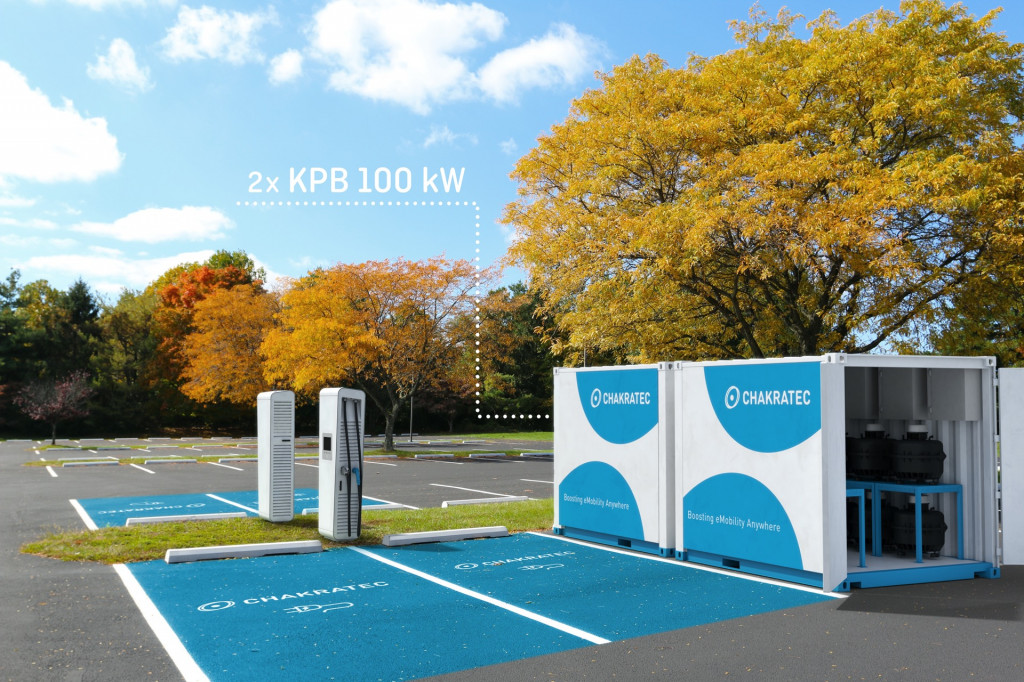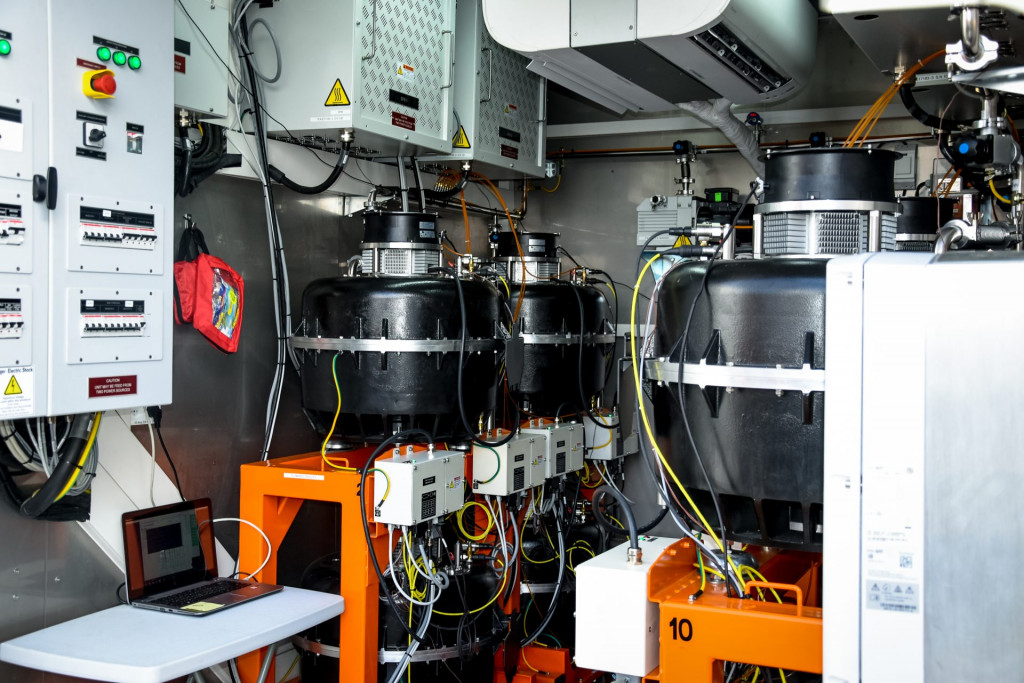Although true flywheel-based kinetic energy recovery systems (KERS) never quite caught on in racing or in production hybrids, a company in Israel has been working on putting the technology to use where it could make a big difference: EV fast-charging stations.
The flywheels Chakratec uses for charging stations weigh about 330 pounds each and they’re housed in canisters where they’re suspended in a vacuum. The great mass of one canister unit allows two shorter-range EVs to be fast-charged to 80% simultaneously as the flywheel “spins down,” after which the unit requires about 45 minutes to get back up to its ideal/top speed.
Chakratec flywheel-based Kinetic Energy Storage systems for EV charging, grid-balancing
With flywheel technology—which the company terms a kinetic battery—the company allows the deployment of fast-charging stations anywhere. It doesn’t require big batteries because the energy storage is all accomplished mechanically.
The company says that the solution is a greener one. It will last 20 years and enable roughly 200,000 charge and discharge cycles—far better than today’s assumed cycle life for batteries, which the company says can last as little as 2-3 years in busy locations, and likely a beneficial choice versus second-life EV batteries rotated in.
Likewise, flywheels can be located in some places where batteries wouldn’t be advisable—like inside or underground.
Chakratec claims that it currently has Škoda, Blink, and Enel X as clients and units in use in Germany and the Czech Republic. Tuesday it announced the deployment of one of its units at a German hotel.

Chakratec flywheel-based Kinetic Energy Storage systems for EV charging, grid-balancing
Both Jaguar and Volvo have been among many automakers testing flywheel tech prior to their current battery-electric push, and Porsche also back in 2010 showed a 911 hybrid test car that could store energy in a flywheel—an adapted version of the original (and never fully implemented) idea for a Kinetic Energy Recovery System (KERS) built into Formula 1 race cars.
Why did flywheel tech never catch on in vehicles? Primarily, the duration of boost from a car-sized flywheel system was quite short. And in some cases, the physics resulted in imbalances in the vehicle. But with much heavier flywheels, deployed securely in a charging station, this company appears to have a great use for the tech.

lasuna over the counter – himcolin generic buy himcolin
Thank you for addressing this topic. It’s very relevant to me.
besifloxacin tubes – carbocisteine where to buy buy sildamax for sale
gabapentin canada – cheap gabapentin for sale sulfasalazine oral
purchase probenecid generic – monograph 600 mg sale generic carbamazepine 400mg
mebeverine for sale – order etoricoxib online cheap buy generic pletal online
order generic voltaren 50mg – order diclofenac 50mg pills aspirin 75mg canada
voveran without prescription – order nimodipine generic purchase nimodipine online cheap
baclofen where to buy – piroxicam 20 mg canada buy feldene pills for sale
periactin 4 mg cost – zanaflex cheap order tizanidine 2mg pills
purchase artane without prescription – emulgel buy online order cheap voltaren gel
buy omnicef 300 mg online – buy generic clindamycin
buy isotretinoin 10mg for sale – dapsone 100mg pills deltasone 10mg cost
purchase prednisone online – order zovirax generic elimite online
buy acticin for sale – retin gel tablet generic retin cream
betamethasone 20 gm tablet – buy betamethasone 20 gm cream benoquin online order
buy flagyl generic – order metronidazole sale cenforce 50mg pills
purchase augmentin sale – cheap levothyroxine online brand levothroid
clindamycin canada – purchase indocin online cheap buy indomethacin medication
buy crotamiton sale – buy aczone medication aczone gel
buy zyban pills for sale – buy bupropion 150 mg online cheap shuddha guggulu online
order modafinil 100mg sale – order modafinil 200mg without prescription buy melatonin 3 mg online
progesterone online buy – serophene medication buy clomiphene online
capecitabine 500mg pills – ponstel online order order generic danazol 100mg
order norethindrone 5 mg online cheap – order aygestin without prescription yasmin price
alendronate 35mg generic – buy medroxyprogesterone 5mg generic purchase provera pill
buy generic cabergoline 0.5mg – buy cheap generic premarin alesse tablet
г‚·гѓ«гѓ‡гѓЉгѓ•г‚Јгѓ«гЃ®йЈІгЃїж–№гЃЁеЉ№жћњ – г‚·г‚ўгѓЄг‚№ жµ·е¤–йЂљиІ© жЈи¦Џе“Ѓг‚їгѓЂгѓ©гѓ•г‚Јгѓ«йЊ гЃ®жЈгЃ—い処方